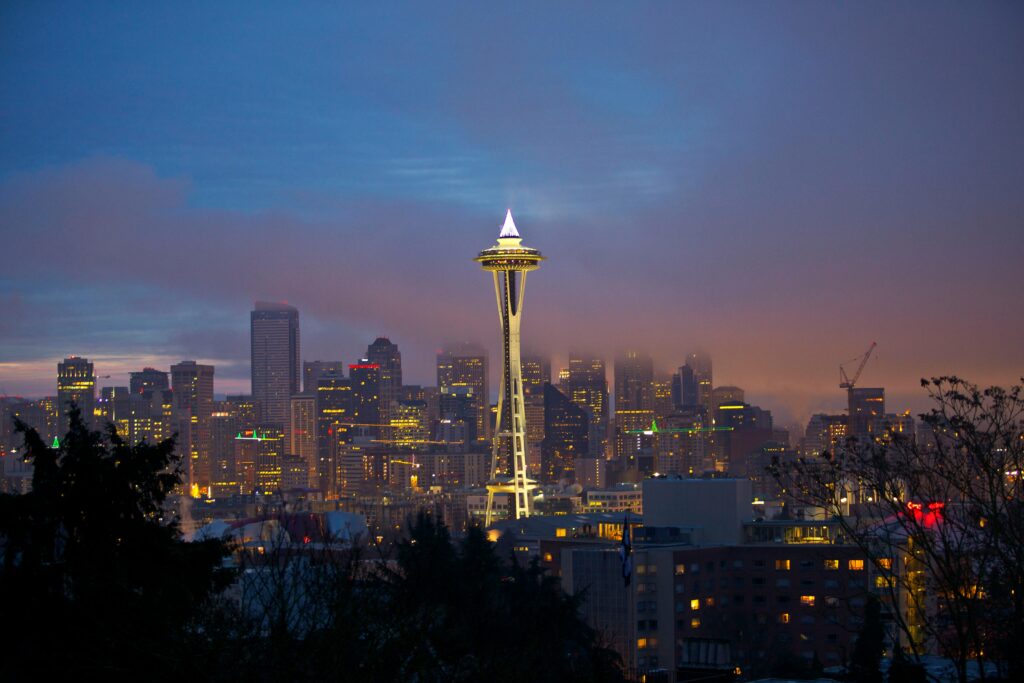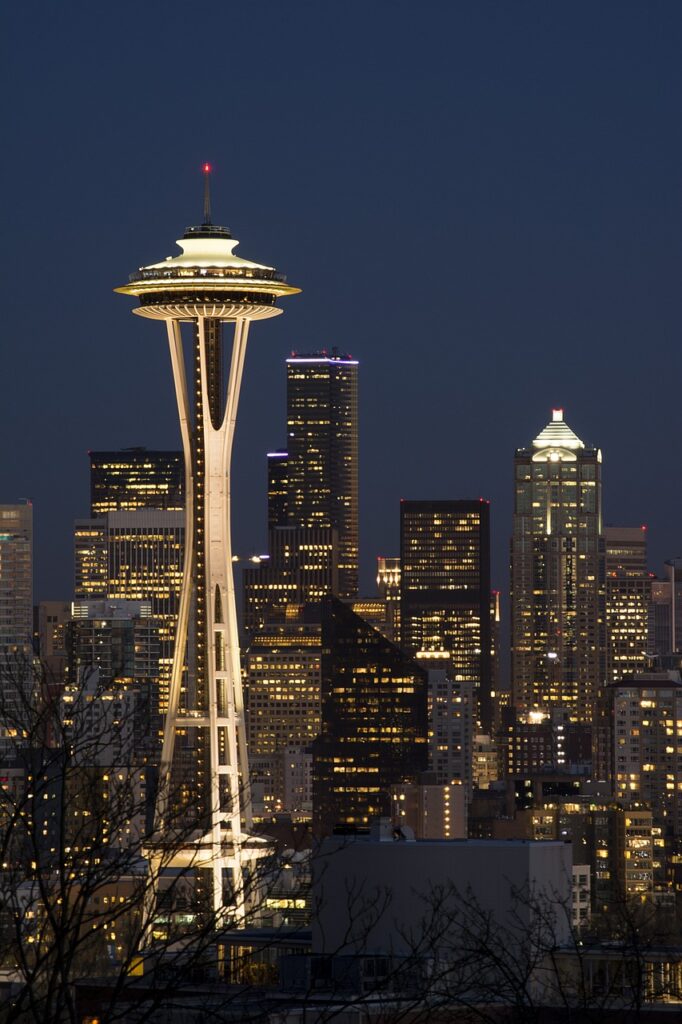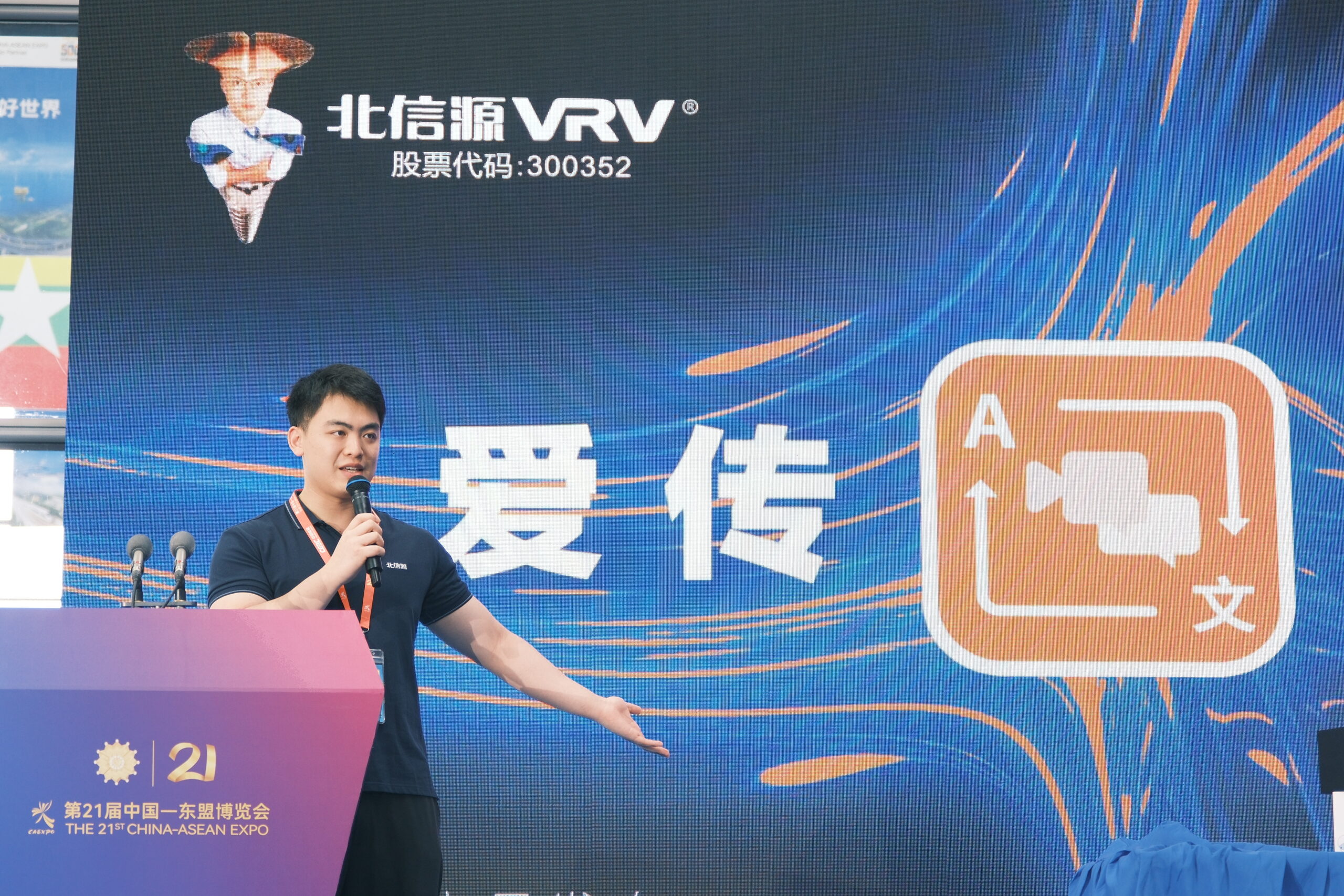Seattle’s Space Needle has unveiled a new double-decker, all-glass elevator cab—the first of three modern units set to replace its iconic golden cabs as part of a four-year, $18 million elevator modernization project within the broader $100 million Century Project renovation.

A New Ride Skyward
- Double-Decker Design: The elevator features two stacked passenger compartments, doubling capacity and offering unique head-to-toe skyward views through floor-to-ceiling glass panels.
- Scenic Ascent: In roughly 42 seconds, visitors ascend 520 feet to the observation deck, enjoying unobstructed panoramic vistas of Seattle’s skyline, Elliott Bay, and surrounding mountains.
- Cutting-Edge Fabrication: Otis—the original installer of the Needle’s elevators in the early 1960s—engineered the cab mechanisms, while Olson Kundig led the architectural design of the new glass enclosure.
Part of a Four-Year Overhaul
The elevator project is being executed overnight to keep the Space Needle open during peak hours. One elevator is replaced each year, ensuring continuous service:
- Phase 1 (Sept 2024–May 2025): Hoistway modifications and installation of the first double-decker cab, now welcoming guests.
- Phases 2 & 3: Similar overnight swaps of the remaining two elevators, slated for completion by mid-2027.
Turner Construction crews manage the structural work in the tower’s hoistway and machine room, while the Seattle Landmark Preservation Board oversees compliance with historic-landmark guidelines.
Enhancing the Century Project Legacy
This elevator upgrade is the final major phase of the Century Project, which has already:
- Added floor-to-ceiling glass barriers and the world’s first revolving glass floor (the Loupe) in 2018.
- Refreshed dining and public spaces with accessible elevators and new amenities.
With the double-decker elevator, the Space Needle combines mid-century modern spirit with 21st-century technology—renewing the thrill that greeted visitors at its 1962 debut.

Frequently Asked Questions
Q: What makes these elevators “double-decker”?
A: Each cab has two stacked passenger compartments, allowing two separate groups to ride simultaneously.
Q: How many people can each elevator hold?
A: Each compartment holds up to 25 riders (50 total), doubling the original capacity.
Q: How long does the ride last?
A: Approximately 42 seconds from ground to observation deck.
Q: Will the Space Needle remain open during construction?
A: Yes—work is done overnight, and service continues uninterrupted during daytime hours.
Q: Who manufactured the new elevators?
A: Otis Elevator Company, maintaining its historic legacy with the landmark.
Q: Who designed the glass cabins?
A: Olson Kundig, the architectural firm behind the Needle’s 2018 Century Project upgrades.
Q: When will all three elevators be replaced?
A: The project spans four years, with full completion expected by mid-2027.
Q: Is this part of a larger renovation?
A: Yes, it’s the final phase of the privately funded Century Project, which totaled $100 million.
Q: How can visitors ride the new elevator?
A: Simply purchase a standard Space Needle admission ticket—no extra fee for the upgraded experience.
Q: What’s next for the Space Needle?
A: Ongoing maintenance, enhanced digital guides, and potential future exhibits leveraging the Needle’s panoramic view.

Sources The Seattle Times


